Nicole Meyer-Vernet0521814200, 9780521814201, 9780511269929
Table of contents :
Half-title……Page 3
Series-title……Page 4
Title……Page 5
Copyright……Page 6
Dedication……Page 7
Contents……Page 9
Preface……Page 15
1.1 A brief history of ideas……Page 17
1.1.1 Intermittent particle beams?……Page 18
1.1.2 Permanent solar corpuscular emission?……Page 20
1.1.3 The modern solar wind……Page 22
1.2 Looking at the Sun……Page 24
1.2.1 Basic solar properties……Page 25
Spectral distribution……Page 26
Spectral lines……Page 28
1.2.3 The solar disc……Page 29
The disc as a whole……Page 30
Sunspots……Page 31
Magnetic field on the Sun……Page 33
Chromosphere……Page 34
Visible coronal radiation……Page 35
Coronal structure……Page 37
Coronal emission of ultraviolet and X-rays……Page 38
Some subtleties of space exploration……Page 40
Several winds……Page 42
1.3.2 Exploring the third dimension with Ulysses……Page 44
The solar wind in three dimensions……Page 46
1.3.3 A simplified three-dimensional picture……Page 49
Dipolar magnetic field……Page 50
A dipole plus a wind……Page 51
References……Page 53
2 Tool kit for space plasma physics……Page 57
2.1 What is a plasma?……Page 58
Debye shielding……Page 60
Non-linear shielding……Page 62
Timescale for shielding……Page 63
A reminder on collisions in neutral gases……Page 64
Coulomb collisions……Page 66
Mean free path for collisions of charged particles……Page 67
2.1.4 Plasma oscillations……Page 70
Quantum degeneracy……Page 72
2.1.6 Summary……Page 73
2.2.1 The key role of the magnetic field……Page 74
Uniform magnetic field……Page 75
Electric field or applied force……Page 77
Variation of………Page 78
Magnetic moment……Page 79
Magnetic mirrors……Page 80
2.2.4 Adiabatic invariants……Page 81
2.3.1 Elements of plasma kinetics……Page 82
A reminder: the Maxwellian distribution……Page 83
The convective derivative……Page 84
A reminder: the continuity equation……Page 85
Basic illustration: effect of a force on the velocity distribution……Page 86
The infinite hierarchy of fluid equations……Page 88
Bernoulli’s theorem……Page 90
Sound waves and their plasma counterparts……Page 92
Shocks……Page 93
Transport of momentum and heat……Page 96
Transport in plasmas……Page 99
Beware of fluid equations in space plasmas……Page 100
2.3.3 Elements of magnetohydrodynamics……Page 101
Plasma electric conductivity……Page 102
Magnetic diffusion……Page 103
Frozen-in magnetic field……Page 104
Magnetic forces……Page 106
Magnetohydrodynamic waves……Page 108
Non-ideal magnetohydrodynamics……Page 110
Electromagnetic waves……Page 112
Langmuir waves……Page 114
Landau damping……Page 115
2.3.5 Summary……Page 116
2.4.1 Energy of ionisation and the size of the hydrogen atom……Page 117
2.4.2 Ionisation by compressing or heating……Page 118
Ionisation and recombination……Page 119
Cross-sections……Page 120
Ionisation by particle impact……Page 121
Charge exchange……Page 122
2.5.1 Linear Debye shielding in a non-equilibrium plasma……Page 123
2.5.3 Particles trapped in a planetary magnetic field……Page 124
Hints……Page 125
References……Page 126
3.1 An (almost) ordinary star……Page 129
Virial theorem……Page 130
Temperature within the star……Page 131
Radiative energy……Page 132
Luminosity versus mass……Page 133
Nuclear fusion……Page 134
Timescales……Page 135
Stability of the Sun……Page 136
Minimum mass……Page 137
Maximum mass……Page 138
3.2 Structure and dynamics……Page 139
3.2.1 Modelling the solar interior……Page 140
3.2.2 Convective instability……Page 141
Criterion for instability……Page 142
Applying the criterion……Page 143
The mixing-length approach……Page 144
Application to convection within the Sun……Page 146
Beyond the mixing-length picture……Page 147
The solar surface……Page 148
Convection near the surface……Page 149
Granules……Page 150
How the Sun rotates……Page 151
3.3 Some guesses on solar magnetism……Page 153
3.3.1 Elements of dynamo theory……Page 154
Hints on kinematic dynamos……Page 155
Two prototype dynamos……Page 157
The alpha and the omega……Page 158
Turbulent magnetic diffusion……Page 160
3.3.3 Concentrating and expelling the magnetic field……Page 161
3.3.4 Lorentz force restriction on dynamo action……Page 164
Solar flux tubes……Page 165
Magnetic buoyancy……Page 167
Convective collapse……Page 169
Small-scale magnetic field……Page 170
Sunspots……Page 172
3.4.3 Solar differential rotation……Page 174
Timescale for global temperature change in the convective zone……Page 175
References……Page 176
4 The outer solar atmosphere……Page 181
4.1.1 The atmosphere in one dimension……Page 182
4.1.2 One more dimension……Page 184
4.1.4 …and one dimension in time……Page 185
4.1.5 A (tentative) look at the solar jungle……Page 188
4.2 Force balance and magnetic structures……Page 190
4.2.1 Forces……Page 191
4.2.2 Force-free magnetic field……Page 193
Twist……Page 194
Kink……Page 195
Definition……Page 197
Twist, writhe and linkage……Page 198
Magnetic helicity as a robust invariant……Page 199
Helicity segregation in the Sun and its atmosphere……Page 200
4.2.4 Inferences on magnetic structure in the low corona……Page 201
4.3.1 Radiative losses……Page 202
4.3.2 Radiative and conductive timescales……Page 203
4.3.3 Temperature structure……Page 204
Chromosphere–corona transition……Page 205
4.4.1 Spicules……Page 206
4.4.2 Magnetic loops……Page 207
4.4.3 Prominences……Page 209
Small scales……Page 210
Energy distribution……Page 211
4.5.2 Hints from physics……Page 213
Power law distribution……Page 216
4.6 Coronal heating: boojums at work?……Page 219
4.6.1 The energy budget and how to balance it……Page 220
4.6.2 Heating through reconnection events……Page 221
4.6.3 Heating by waves……Page 222
Alfvén waves……Page 223
Beware of the assumption of local thermal equilibrium……Page 225
A simple toy model……Page 226
Elementary application to the Sun……Page 227
Difficulties……Page 229
4.7.1 Simplified picture of a static atmosphere……Page 230
4.7.2 Magnetic field effects……Page 231
4.8.2 Helicity of a string wrapped around a doughnut……Page 233
References……Page 234
5 How does the solar wind blow?……Page 239
5.1.1 The solar wind on the back of an envelope……Page 241
5.1.2 Nasty questions, or why it is complicated……Page 243
5.2.1 The isothermal approximation……Page 244
Breezes……Page 246
Transonic wind……Page 247
5.2.2 Breeze, wind or accretion?……Page 248
Stability and time reversal……Page 250
Choosing how to blow……Page 251
Energy flux……Page 253
Required heat flux……Page 254
A convenient heat flux……Page 255
Polytrope flow……Page 257
Transonic wind……Page 258
A closer examination of the critical point……Page 259
Breezes……Page 260
Conclusion on polytrope winds……Page 261
5.3.3 Changing the geometry……Page 262
Balance equations with deposition of energy……Page 263
Terminal speed……Page 264
5.3.5 What about viscosity?……Page 265
5.4 A mixture of fluids……Page 266
5.4.1 Simple balance equations……Page 267
5.4.2 Observed proton and electron temperatures……Page 269
5.4.3 The role of collisions……Page 270
Collisional electron heat flux……Page 272
Estimates of the electrostatic field and potential……Page 273
Total force on individual protons……Page 275
5.4.6 Fluid picture balance sheet and refinements……Page 277
5.5.1 Some notations……Page 278
Solar wind protons……Page 279
Solar wind electrons……Page 280
The kappa distribution……Page 281
5.5.3 Non-collisional electron heat flux……Page 283
Particle orbits and how to deal with them……Page 284
Consequences of the electric potential……Page 286
5.5.5 Kinetic models with collisions and wave–particle interactions……Page 289
5.6.1 More and better observations (beware of hidden assumptions)……Page 290
What are the shapes of the velocity distributions in the corona, and might the wind be ‘suprathermally driven’?……Page 291
How is energy transported, and should fluid theories be pensioned off?……Page 292
Convergent duct……Page 293
Solar wind analogy……Page 294
Hint……Page 295
Hint……Page 296
Hints……Page 297
Hint……Page 298
Differential temperature……Page 299
Hints……Page 300
5.7.8 An imaginary wind with charges of equal masses……Page 301
References……Page 302
6.1.1 Parker’s spiral……Page 307
Simple derivation……Page 308
Rotating frame……Page 310
Estimating the magnetic field……Page 311
6.1.2 Basic heliospheric current sheet and other currents……Page 312
6.1.3 Magnetic field e.ects on the wind……Page 315
6.2 Three-dimensional structure during the solar cycle……Page 316
6.2.2 Observed large-scale structure……Page 317
Observations at moderate distances……Page 318
Observations at large distances……Page 320
6.2.3 Connecting the Sun and the solar wind, or: where do the fast and slow winds come from?……Page 321
6.3.1 Interaction between the fast and slow winds……Page 324
6.3.2 Coronal mass ejections in the solar wind……Page 325
Magnetised collisionless shocks……Page 327
Conservation relations at MHD discontinuities……Page 330
6.4.1 Waves……Page 331
6.4.2 Turbulence……Page 334
Elements of fluid turbulence……Page 335
Kolmogorov’s law……Page 337
Consequences and limitations……Page 338
Turbulence in the solar wind……Page 339
6.5.1 Abundances: from the Universe to the solar wind……Page 342
Abundances of heavy ions……Page 343
6.5.3 Pick-up ions……Page 344
6.6.2 Heliospheric currents……Page 345
References……Page 346
7 Bodies in the wind: dust, asteroids, planets and comets……Page 351
7.1.1 Various bodies……Page 352
7.1.2 Mass distribution……Page 354
7.1.3 Mass versus size……Page 357
Chapman layers……Page 360
Planetary ionospheres……Page 362
7.1.5 Planetary magnetic fields and ionospheric conductivity……Page 363
Flow properties……Page 364
Spatial scales……Page 366
Charging on the back of an envelope……Page 368
Charging currents and electrostatic potential……Page 369
Deducing the electric charge……Page 371
Charging timescale……Page 372
Wakes……Page 373
Insulating body: the Moon example……Page 374
Large conducting body……Page 377
7.2.4 Large objects with a conducting atmosphere……Page 378
7.2.5 Large magnetised objects……Page 381
7.2.6 Bow shocks……Page 384
7.2.7 Not being constant: sputtering and evaporation……Page 387
7.3 The magnetospheric engine……Page 388
Simple picture……Page 391
Opening the magnetosphere……Page 392
Energy from the solar wind……Page 394
Coupling……Page 395
Rotation and drift……Page 399
Storms……Page 401
Substorms……Page 403
Space weather……Page 405
7.4.1 Forces……Page 406
Radiation forces……Page 407
Plasma drag……Page 408
Lorentz force……Page 409
7.5 Comets……Page 410
7.5.1 Producing an atmosphere……Page 413
7.5.2 Ionising the atmosphere……Page 416
7.5.3 Pick-up of cometary ions……Page 417
7.5.4 Magnetic pile-up……Page 419
7.5.5 The plasma tail……Page 420
7.5.6 X-ray emission……Page 422
7.5.7 The dust tail……Page 424
7.6.2 Magnetic pile-up……Page 425
7.6.3 Chapman–Ferraro layer……Page 426
7.6.5 Ring current……Page 427
7.6.7 Gas–dust drag in a comet: another nozzle problem……Page 428
References……Page 429
8.1 The frontier of the heliosphere……Page 435
8.1.1 The Local Cloud……Page 436
The plasma……Page 437
The neutrals……Page 438
8.1.3 The size of the solar wind bubble……Page 440
8.2 Cosmic rays……Page 441
8.2.1 Cosmic rays observed near Earth……Page 442
Rigidity and radius of gyration……Page 446
Betatron acceleration……Page 447
Fermi acceleration……Page 448
First-order Fermi acceleration at shocks……Page 450
8.2.3 Modulation of galactic cosmic rays by solar activity……Page 452
Drift in the large-scale heliospheric magnetic field……Page 453
8.2.4 ‘Anomalous cosmic rays’……Page 455
8.3 Examples of winds in the Universe……Page 456
8.3.1 Some basic physical processes in mass outflows……Page 457
8.3.2 Some empirical results on stellar winds……Page 459
8.3.3 The efficiency of the wind engine……Page 461
The efficiency of stellar wind engines……Page 462
8.4.4 Instability of a star’s atmosphere produced by radiation pressure……Page 464
References……Page 465
Solar parameters……Page 467
Commonly used symbols……Page 468
Dynamics of a charged particle (q, m) in a magnetic field……Page 469
Fully degenerate electrons……Page 470
Example: the Earth……Page 471
Useful vector identities……Page 472
Index……Page 473
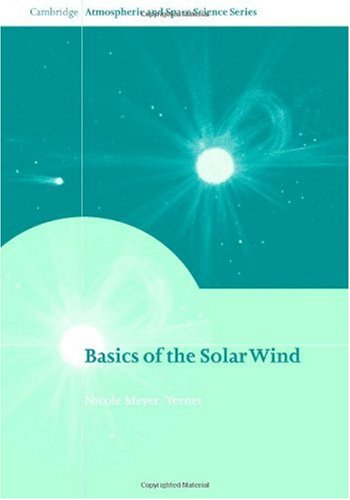
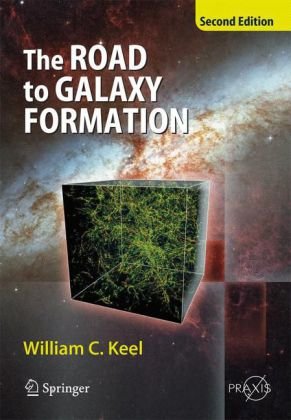
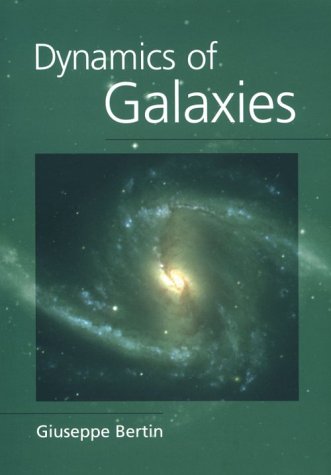


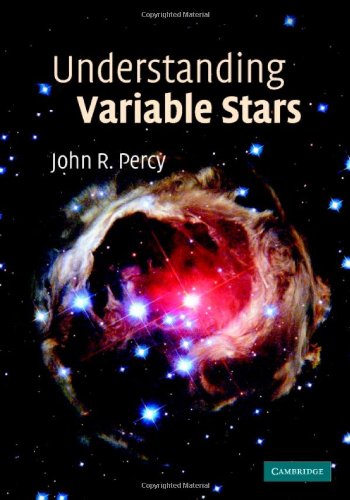
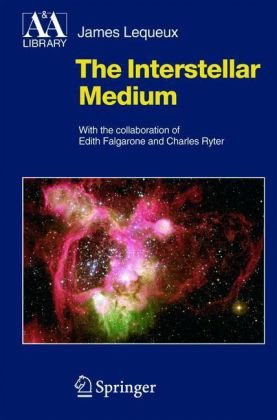
Reviews
There are no reviews yet.